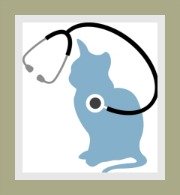Cat Vaccinations
Recommended Vaccines to Protect Your Cat
Cat vaccinations provide 'active immunity' to your kitten or cat. As many infectious cat diseases are fatal to kittens (and adult cats) it is preferable that they receive feline vaccinations.
Kittens receive 'passive immunity' from their mother's colostrum or 'first milk'. This immunity is short-lived and disappears after about 12 weeks.
A kitten
can also obtain 'active immunity' if it contracts and survives the
disease.
cat vaccines schedule
This is a guide - your
veterinarian will provide you with the ideal
course of treatment based on your cat's health, risk profile and country
you live in.
essential cat vaccinations
Vaccine |
Kitten Age |
Booster |
| *Feline Panleucopenia Virus (aka Feline Infectious Enteritis, Feline Distemper vaccine or Feline Parvovirus) | First vaccine at 8 weeks. 2nd vaccine at 12 weeks 3rd vaccine at 16 weeks Can start at 6 weeks with 3- 4 week intervals until kitten is 16 weeks old |
1st Booster 1 year after the last dose of the initial series and every 3 years thereafter |
*Feline Herpes Virus (aka Feline Viral Rhinotracheitis aka Cat Influenza or Cat Flu |
First vaccine at 8 weeks. 2nd vaccine at 12 weeks 3rd vaccine at 16 weeks Can start at 6 weeks with 3- 4 week intervals until kitten is 16 weeks old |
1st Booster 1 year after the last dose of the initial series and every 3 years thereafter |
| *Feline Calicivirus (FCV) | First vaccine at 8 weeks. 2nd vaccine at 12 weeks 3rd vaccine at 16 weeks Can start at 6 weeks with 3- 4 week intervals until kitten is 16 weeks old |
1st Booster 1 year after the last dose of the initial series and every 3 years thereafter |
| Cat Rabies Vaccine | Regime varies. 1st vaccine at 8 weeks and then at 1 year. or 1st vaccine at 12 weeks; repeat at 1 month and again at 9 months |
Annual boosters are essential. Law in certain countries. |
*
These essential cat vaccinations are usually combined.
non-essential cat vaccinations
These vaccines are recommended for high risk cats.
Vaccine |
Kitten Age |
Booster |
| Feline Leukaemia Virus (FeLV) - feline leukemia vaccine | 1st feline leukemia vaccine is to be administered at 8 weeks and the 2nd vaccine 3 -4 weeks later |
Annual booster is recommended for multi-cat households and cats in catteries |
| Feline Immunodeficiency Virus (FIV) | First vaccine at 8 weeks. 2nd vaccine at 11 weeks 3rd vaccine at 14 weeks |
Annual booster is recommended for multi-cat households and cats in catteries |
| Feline Chlamydophila | 1st vaccine is to be administered at 8 weeks and the 2nd vaccine 3-4 weeks later | Annual booster is recommended for multi-cat households and cats in catteries. |
| Bordetella Bronchiseptica | 1st vaccine is to be administered at 16 weeks and the 2nd vaccine 3-4 weeks later | Annual booster is recommended for multi-cat households and cats in catteries. |
| Feline Infectious Peritonitis (FIP) | 1st vaccine is to be administered at 16 weeks and the 2nd vaccine 4 weeks later | Annual booster is recommended for multi-cat households and cats in catteries. There is some doubt about the efficacy of the FIP vaccine. |
| Giardia | 1st vaccine is to be administered at 8 weeks and the 2nd vaccine 2-4 weeks later | Annual booster is recommended for multi-cat households and cats in catteries. |
Note:
Most reputable boarding catteries will not allow admission of cats
unless they have received the essential vaccinations.
cat vaccinations | adverse effects
Vaccines, like many pharmaceutical and biological preparations may have side effects and adverse reactions.
Most of the reactions are minor, but in some cases severe side effects have been reported.
Severe reactions are rare. Generally, the benefits of cat vaccinations far outweigh the risks.
Mild Reactions: raised temperature, general malaise, listlessness pain, redness and swelling at injection site
Severe Reactions:
allergic reactions (anaphylactic shock), sarcoma - a tumour that develops at the site of injection
We explore the functions of feline vaccinations, the routes of administration and the factors that influence the effectiveness of vaccines.
Top of Cat Vaccinations Page
search our site
please like us
share our site
recommend on google
favorite pages





